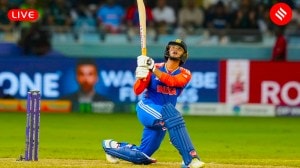Arts on the Board
How a proposal to introduce arts education in primary schools will sensitise students to theatre,dance and music
How a proposal to introduce arts education in primary schools will sensitise students to theatre,dance and music
Can an eight-year-old child sit through a tabla performance? Can a Class VII student tell a Ravi Varma painting from an Amrita Shergill? Can a schoolboy distinguish between Kathak and Bharatanatyam? While students today are crammed with inordinate quantities of maths and science and geography,the fine arts are altogether ignored in the school curriculum. A small team of thinkers and activists hopes to correct this imbalance.
On the 10th anniversary of Delhi Public School,Varanasi,Shubha Mudgal will put together a conclave to debate the idea of an arts education curriculum in schools. Since chairing the Arts Education Committee for NCERTs National Curriculum Framework in 2005,Mudgal has advocated the implementation of this curriculum in schools and has often criticised the NCERTs inability to do so over the last seven years. For the upcoming conclave,to be held on July 28 and 29,Mudgal and her husband,tabla player Aneesh Pradhan,have brought together a panel to discuss a wide range of concerns,from pedagogy to infrastructure.
The idea is simple: to introduce art education as a subject in primary and secondary schools on which students will be evaluated. Mudgal realises that unless students are tested,the course will be relegated to the category of a hobby or leisure activity between the more important maths and science classes. Arts education will include music,dance,theatre and visual arts; the aim is to sensitise the students to these forms rather than train them to become artistes. The students should develop a familiarity with Indias art traditions, says Mudgal. Aneesh and I had once conducted an informal survey with students who were taking music lessons at home. None knew the name of the music teacher. What was a greater shock was that most of the parents did not know the name of the teacher who came home to teach their child. But the figure of the guru is vital in our tradition. Even if the children dont want to become musicians,they should be aware of the significance of the guru, she says.
The problem with this idea is obvious: how does one find teachers with command over music,dance,theatre and visual art? It will be impractical for a school to have four teachers taking the arts education class in rotation. One person will have to cover all four aspects. Anupama Prakash of the India Foundation for the Arts,and a panellist at the DPS event,stresses the importance of designing teacher-training courses with specific focus on arts education. Just like a maths teacher cannot say that he will teach differentiation but not the binomial theorem,an arts education teacher cannot be given a choice. Teacher-training programmes will be key to implementing this idea. Prakash has been working on arts education with government schoolteachers in Karnataka over the last three years and is confident that exhaustive training can equip teachers to take this course competently.
Harshesh Mehta,a music teacher in a school in Dandi,Gujarat,and also a panellist,is not as confident of this Jack-of-all-arts model. I dont see how a music teacher can be expected to teach dance and theatre. How can there be serious focus on any one art form then? he says. As a music teacher,my aim is to take the students into the depths of music. That is my forte. He feels that a more sensible model will be to engage part-time teachers who will cover a number of schools in an area; a pool of teachers (with specific skills in one art form) can thus cover arts education in a number of schools by rotation. Mehtas understanding of a music class is informed by his training in Hindustani music. From Class I to Class IV,teach them songs,and then guide them into classical, he says. But Mudgal and Prakash are opposing this. We have to get down from the cultural high ground of classical. The idea is not to make classical musicians or classical dancers of all the students, says Prakash. Mudgal agrees. Lets say we are teaching the children a song. While singing,they are gradually asked to clap. And then move a step to the right and then to the left with each clap. This can integrate a sense of melody,rhythm and movement, she says.
Mudgal believes all schools should have audio-visual libraries. Students should be encouraged to listen to music and see films and plays in a guided manner, she says.
Arunabha Deb is a Kolkata-based music writer
Photos



- 01
- 02
- 03
- 04
- 05



























